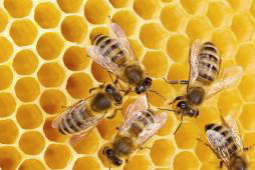FOR IMMEDIATE RELEASE
ACS News Service Weekly PressPac: September 21, 2011
Queen bee or worker bee? New insights into famous honeybee society caste system
Scientists are reporting deep new insights into whys and hows of the famous caste system that dominates honey bee societies, with a select few bee larvae destined for royalty and the masses for worker status. Their study probing the innermost biological makings of queen bees and worker bees appears in ACS’s Journal of Proteome Research.
Jianke Li and colleagues (The joint work of scientists from China and Ethiopia) note that despite more than a century of research, mysteries remain about the biochemical factors at the basis of the fascinating caste system in honeybee colonies. Schoolchildren learn that the (usually) one queen bee in a colony develops from larvae fed royal jelly, a protein-rich secretion from glands on the heads of worker bees. Other larvae develop into female workers or male drones. Although queen and worker bees share almost identical genes, their destinies could be more different. “The female queen is large in size and specializes in reproduction,” the scientists explain, “whereas workers are small and engage in colony-maintaining activities. Their life spans also vary, with the queen living for 1 to 2 years and the workers living only 6 to 7 weeks. To gain further information, the scientists looked at proteins inside the cells of larvae destined for queen and worker status.
Their findings reveal major differences, during early stages of life, in the activity of proteins in the mitochondria, structures that produce energy for cells. The differences include changes in the amounts of protein produced in cells and the activity of those proteins. In pre-queen larvae, proteins involved in carbohydrate and energy metabolism, for instance, are much more active than in workers. “This suggests proteins with metabolic enhancing activities generally appear to have significant roles in the process of caste determination,” the researchers conclude.
![]()

of how the famous caste system that dominates
honey bee societies works.
Contact
Science Inquiries: Michael Woods, Editor, 202-872-6293
General Inquiries: Michael Bernstein, 202-872-6042


